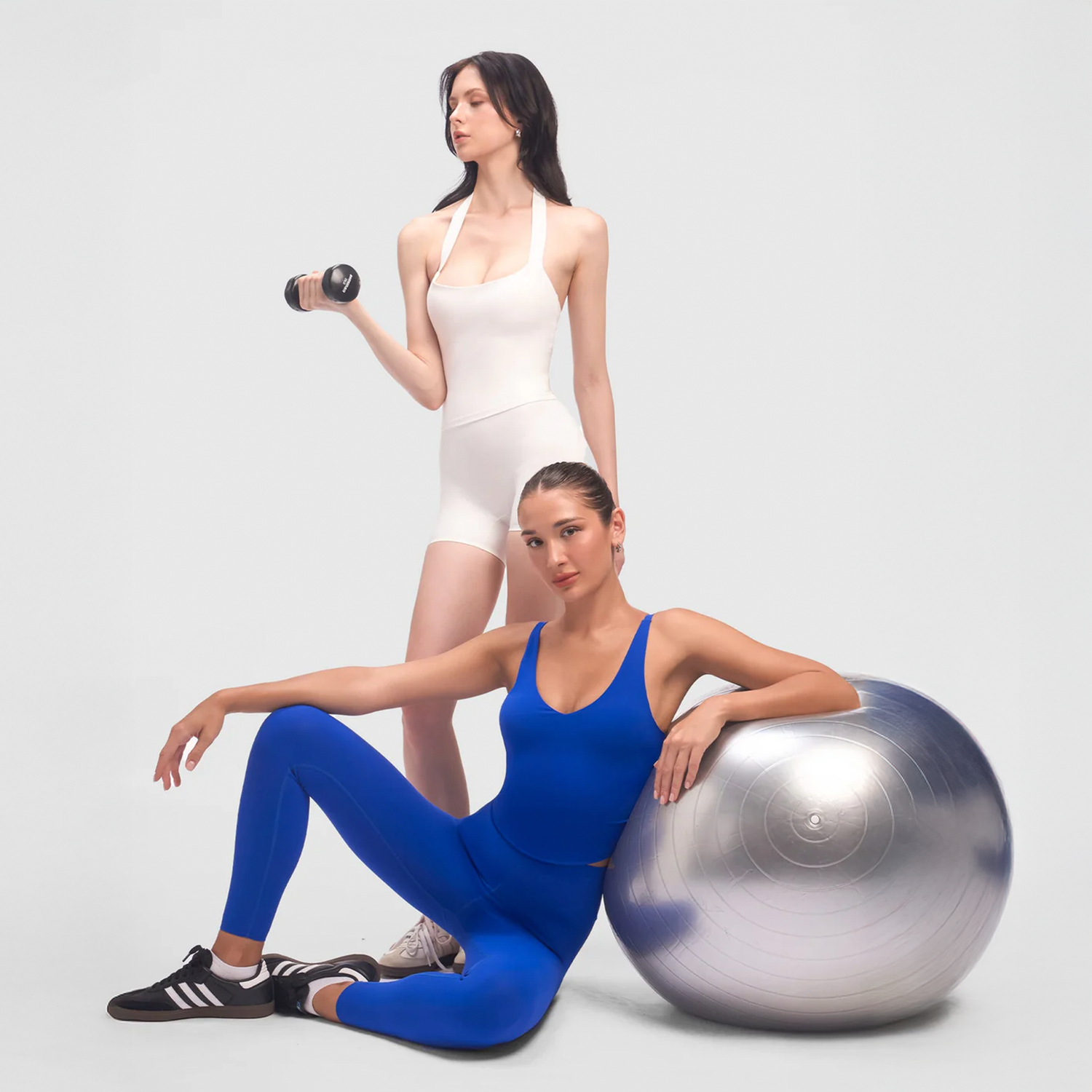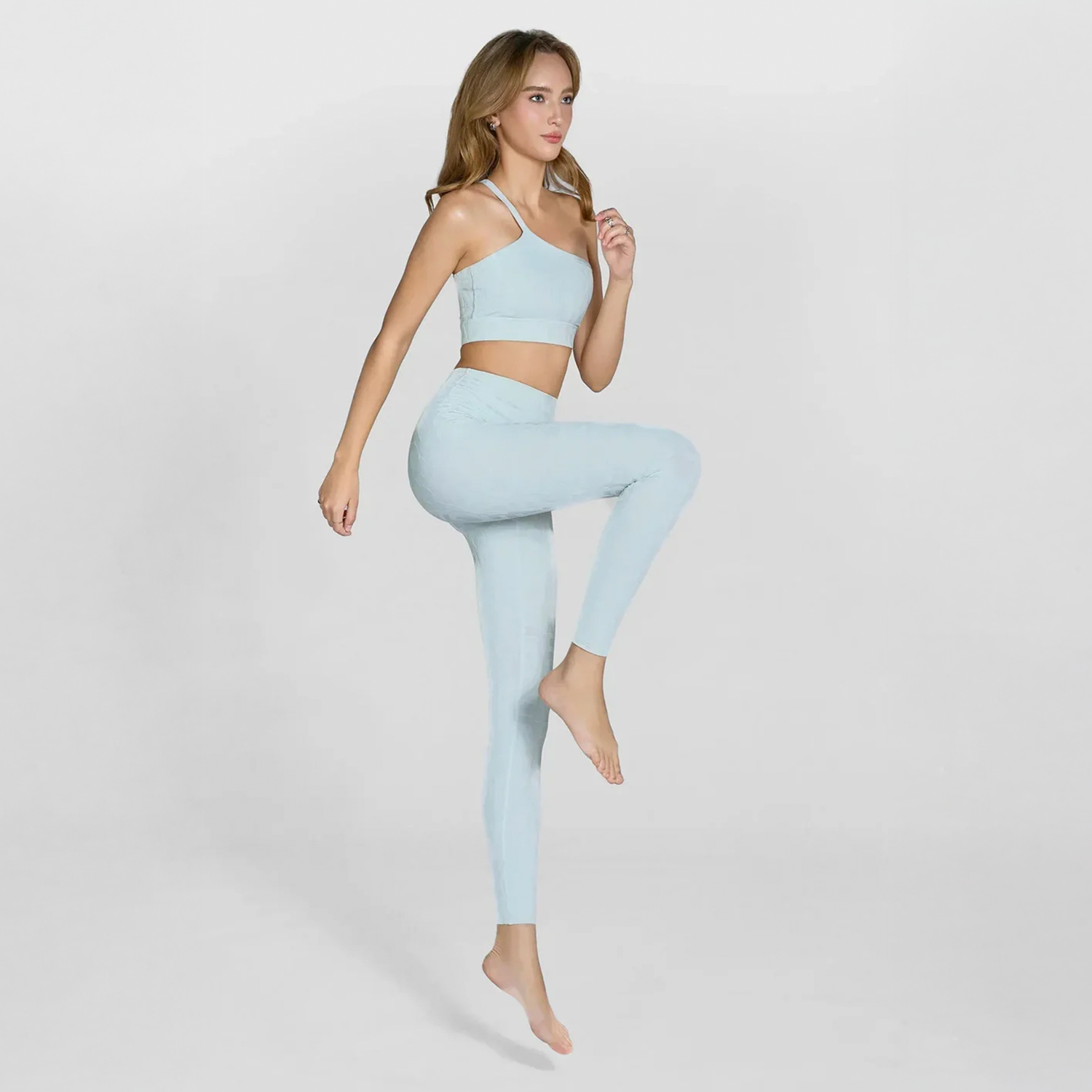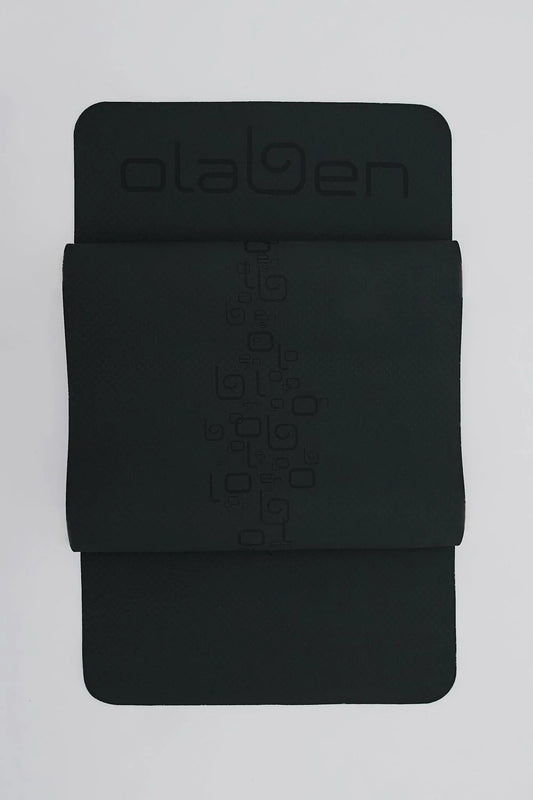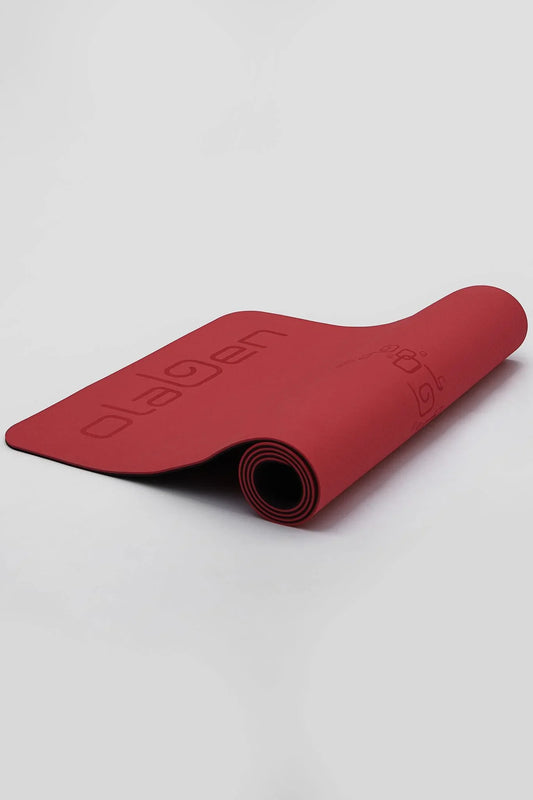If you’ve just rolled out your yoga mat for the first time, you may have noticed that yoga comes with its own language. Teachers often sprinkle Sanskrit terms into classes, and at first it can feel like you’re learning a new dialect while trying to balance in Downward Dog. To help you feel more confident in class, Olaben gives you a glossary of common yoga terms explained in plain English.
Core Yoga Terms
- Yoga: The word “yoga” comes from the Sanskrit root yuj, meaning to yoke, bind, or unite. In practice, yoga is the union of body, breath, and mind.
- Asana: Literally “seat,” but today it refers to the physical postures of yoga. Every pose you practice on the mat is an asana—from Mountain Pose (Tadasana) to Tree Pose (Vrksasana).
- Prana: Often translated as “life force” or vital energy. Think of it as the energy that flows through you with every breath.
- Pranayama: Breathing practices designed to control, expand, and guide prana through the body. Techniques like Ujjayi (ocean breath) are common in class.
- Drishti: A focused gaze point. Used to help with concentration and balance—essential when you’re wobbling in Warrior III.
- Namaste: A traditional greeting often used to close class. It can be translated as “The light in me bows to the light in you.”
- Om (A-U-M): The universal sound, often chanted at the beginning or end of class. Said to represent the vibration of the entire universe.

Anatomy and Energy
8. Bandhas: Energy locks in the body that help direct prana. The three main ones are:
- Mula Bandha (pelvic floor)
- Uddiyana Bandha (lower abdomen)
- Jalandhara Bandha (throat)
9. Chakras: Energy centers running along the spine from the base to the crown of the head. There are seven primary chakras, each linked with physical, emotional, and spiritual qualities.
10. Nadi: The energy channels through which prana flows. Breathing practices like alternate-nostril breathing help balance these pathways.
Common Poses
11. Downward Dog (Adho Mukha Svanasana): A staple pose that looks like an upside-down “V.” Stretches the spine, hamstrings, and shoulders.
12. Chaturanga (Chaturanga Dandasana): A low plank position that builds arm, shoulder, and core strength. Often part of a flow sequence.
13. Savasana: Literally “corpse pose.” Usually practiced at the end of class for deep rest and integration.
14. Surya Namaskar (Sun Salutation): A flowing sequence of poses often used to warm up the body and link breath with movement.

Yoga Styles
15. Hatha: A foundational style of yoga. Slower-paced and focused on alignment—great for beginners.
16. Vinyasa: Flow-style yoga where postures are linked with breath in dynamic sequences.
17. Yin Yoga: Slow, floor-based practice with long-held poses targeting connective tissues.
18. Yoga Nidra: Known as “yogic sleep,” a guided practice that brings you into a state between wakefulness and sleep.
Philosophy and Tradition
19. Patanjali: An ancient sage who compiled the Yoga Sutras, outlining yoga philosophy and the “Eight Limbs of Yoga.”
20. Mantra: A word or sound repeated during meditation to focus the mind. Examples include “Om” or “So Hum.”
21. Mudra: Hand gestures used in meditation and asana to channel energy and enhance focus.
22. Shanti: Means “peace.” Sometimes chanted three times at the end of a meditation or practice.

Additional Yoga Concepts
23. Yamas: Simple ethical practices that guide how you interact with others. They include kindness, honesty, and non stealing.
24. Niyamas: Personal habits that support inner growth, such as contentment, self discipline, and self study.
Check more: Yamas and Niyamas: The Ethical Foundation of Yoga
25. Kosha: The layers of the body, from the physical to the emotional and energetic. They help you see yoga as more than movement.
26. Ashtanga: A structured style with a fixed sequence of poses. It builds strength and creates a steady rhythm in your practice.
27. Kundalini: A style that mixes breathing, chanting, meditation, and gentle movement. Many people find it helps create clarity and energy.
28. Proprioception: Your natural sense of where your body is in space. Better awareness means better balance and smoother movement.
Final Thoughts
Learning yoga terms is like learning the vocabulary of a new language—it takes time, but soon it becomes second nature. You don’t need to memorize everything right away. Start with a few basics like asana, pranayama, and namaste, and let your understanding grow naturally as your practice deepens.














